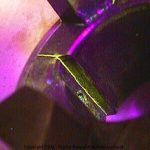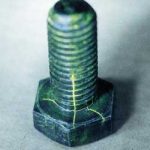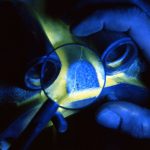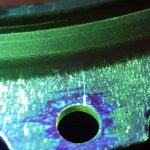Penetrant solution is applied to the surface of a pre-cleaned component. The liquid is pulled into surface-breaking defects by capillary action. Excess Penetrant material is carefully cleaned from the surface. A developer is applied to pull the trapped Penetrant back to the surface where it is spread out and forms an indication. The indication is much easier to see than the actual defect.
Main Uses
Used to locate cracks, porosity, and other defects that break the surface of a material and have enough volume to trap and hold the Penetrant material. Liquid Penetrant testing is used to inspect large areas very efficiently and will work on most nonporous materials.
Main Advantages
- Large surface areas or large volumes of parts/materials can be inspected rapidly and at low cost.
- Parts with complex geometry are routinely inspected.
- Indications are formed directly on surface of the part providing a visual image of the discontinuity.
- Equipment cost is minimal.
Disadvantages
- Detects only surface breaking defects.
- Surface preparation is critical as contaminants can mask defects.
- Requires a relatively smooth and nonporous surface.
- Post cleaning is necessary to remove chemicals.
- Requires multiple operations under controlled conditions.
- Chemical handling precautions are necessary (toxicity, fire, waste).




